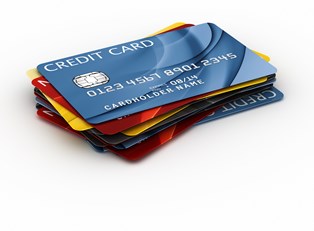Credit Cards come in varying forms, some with more restrictions on use than others. Some offer you rewards for use, while others may not but offer more lenient terms instead. Learn about the different types of credit cards available and which might be best for your personal or business use.
Traditional Credit Card
This type of credit card an individual can obtain depends on the person’s credit history. It has a revolving credit limit issued at the time it was opened. The cardholder is required to make minimum payments, and if payments are missed, finance charges are added to the payments. These general guidelines apply to every credit card. For more specialized cards, additional options may be available to the cardholder, such as reward options. If you have good credit, you can probably qualify for a low interest rate (or low APR). Most traditional credit cards don't require an annual fee.
Business credit cards are similar to traditional credit cards. However, they are only for business owners and not for personal use.
Student Credit Cards
Student credit cards are for college students as a way to build credit. Since college students have little to no credit, they have an easier chance being approved for this type of credit card than any other. Some student credit cards come with an introductory low interest rate or balance transfer to help students consolidate their credit card debt. Since these cards are designed to help build credit, they typically have no annual fee.
Reward Cards
Rewards credit cards offer rewards whenever the cardholder makes a purchase. The rewards depend on the type of card the cardholder has. For some, their rewards are on travel. Others receive their rewards in points. Other cardholders receive cash back. May reward cards have an annual fee attached to their use, particularly high-earning reward cards. Make sure you inquire about any additional fees pertaining to your card use or restrictions on reward redemption.
Secured Credit Cards
Secured credit cards are geared toward individuals with bad credit. In exchange for a deposit, the cardholder receives a credit card. The credit limit is the same amount as the security deposit. It works similarly to a traditional credit card because it has a limit. Secured credit cards often come with rewards, the opportunity to convert the secured card into an unsecured account, and many other benefits. Unfortunately, these secured cards may also come with high interest rates and finance charges for missed payments and the issuing card company may take the security deposit if too many payments are missed.
Charge Cards
Charge cards don’t have a preset limit and must be paid in full at the time the bill is due each month. Thus, there is no minimum fee to pay or finance charges. There are late fees, charge restrictions, and card cancellation when the cardholder doesn't pay.
Prepaid Credit Cards
Prepaid cards are typically debit cards that are reloadable. They may have a Mastercard or Visa logo. There is no spending limit because the cardholder can only spend the amount of money that's on the card. In addition, there are no minimum payments due each month or security deposit. Also, they don't help cardholders' credit.
Subprime Credit Cards
Subprime credit cards are at the bottom of the barrel of all types of credit cards. They are marketed toward individuals with bad credit history. Typically, there is quick credit approval, high interest rates, and annual fees. Unfortunately, the terms are often confusing and sometimes predatory.
Balance Transfer Credit Cards
Balance transfer credit cards start off with a low introductory rate because the cardholder is transferring a balance onto the new card. This balance comes from an old credit card. For instance, Sal has a credit card with a high interest rate and spent $5,000. He’d transfer that $5,000 onto a new credit card. This can also be a good way to consolidate credit card debt. Some of the credit cards offer an introductory rate of zero percent. However, the card holder usually needs good credit to qualify for the new credit card.



